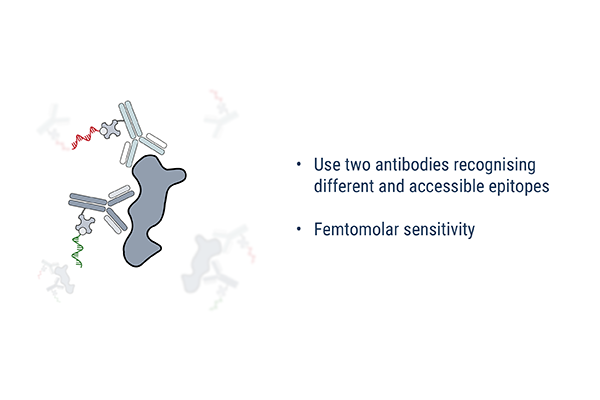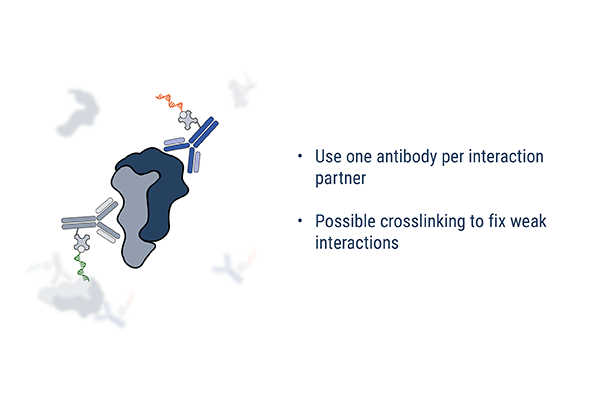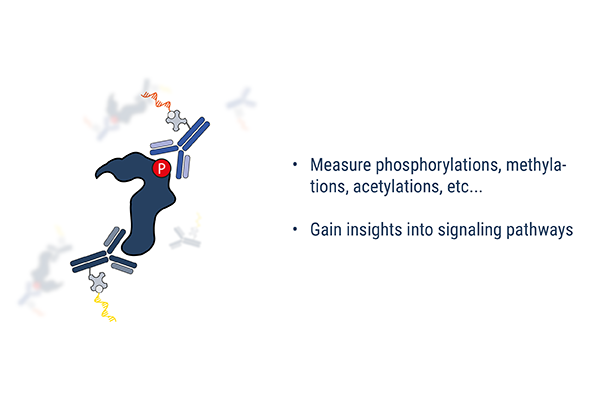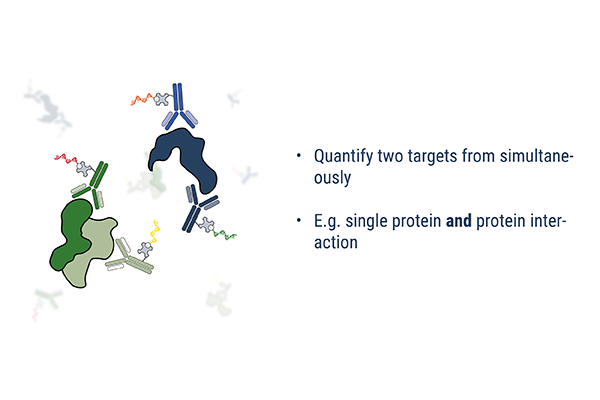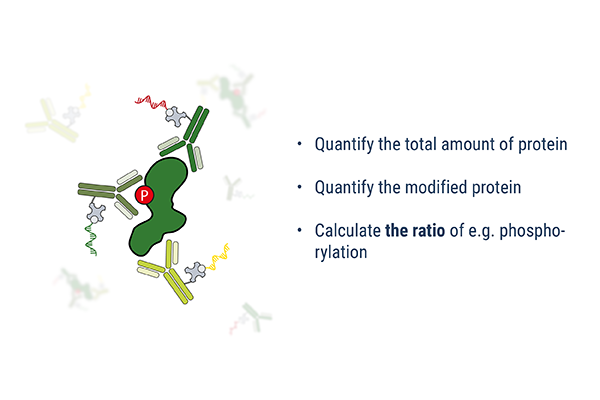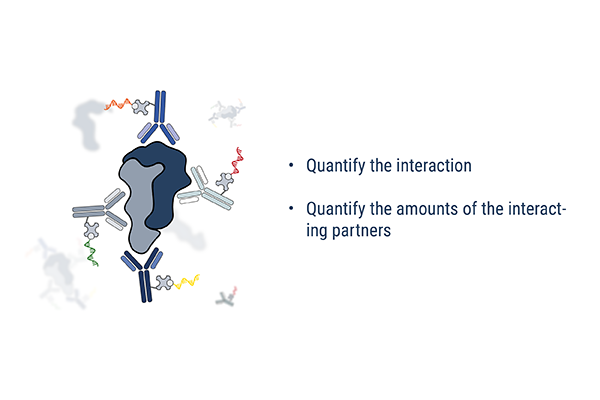Protein Interaction Coupling (PICO)
Actome's proprietary Protein Interaction Coupling (PICO) technology is a highly sensitive immunoassay allowing the ultra-sensitive detection and quantification of proteins, protein interactions, and post-translational modifications using digital PCR technology. Our PICO kits enable the labeling of antibodies with unique DNA oligonucleotides (PICO Labels), the preparation of the PICO assay, and the analysis of the raw dPCR data with our online data analysis software AMULATOR. Read our PICO Handbook for a comprehensive overview about PICO.
The unique features of PICO:
- Ultra-high sensitivity (upper femtomolar with ordinary antibodies)
- Absolute quantification (quantifying molar amounts without an external standard)
- Small sample input (down to 0.5 µL or a few hundred cells)
- Zero background
- Easy multiplexing (measure two targets in parallel)
- Digital assay (counting individual molecules)
- Homogeneous (workflow without washing steps)
Watch our technology explainer video below to learn about the basic principles of PICO:
The PICO Workflow
What can PICO measure?
With PICO you will choose and label your own antibodies, a careful selection allows to investigate a broad range of targets with 2 colors (= 2-plex measurement). Extending the number of labels (up to 4) opens up the possibility for more information from one sample or more sophisticated experimental setups. Check out all the possibilities below!
Two-color PICO Assay
1. Single proteins - by using two antibodies recognizing different accessible epitopes of the same protein
2. Protein interactions - by using two antibodies, each targeting one of the interacting proteins
3. Post-translational modifications - by using one antibody targeting the protein and one antibody targeting the PTM of the same protein
Three- or four-color PICO Assay
1. Two individual targets - all combinations of a 2-color PICO Assay are possible
2. 'Triangular measurement' - quantify the total amount of a protein and its modification simultaneously (phosphorylation, methylation, acetylation, etc...)
3. 'Quadratic measurement' - allowing to quantify an interaction and both interaction partners


